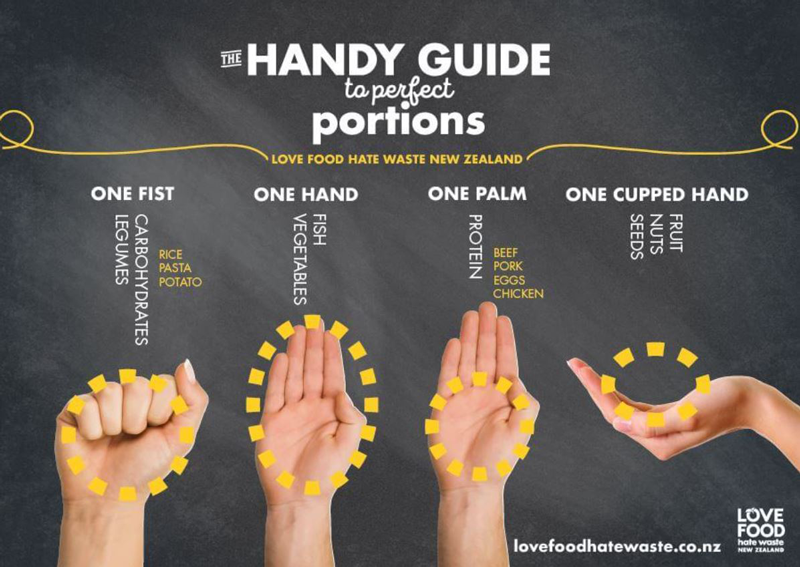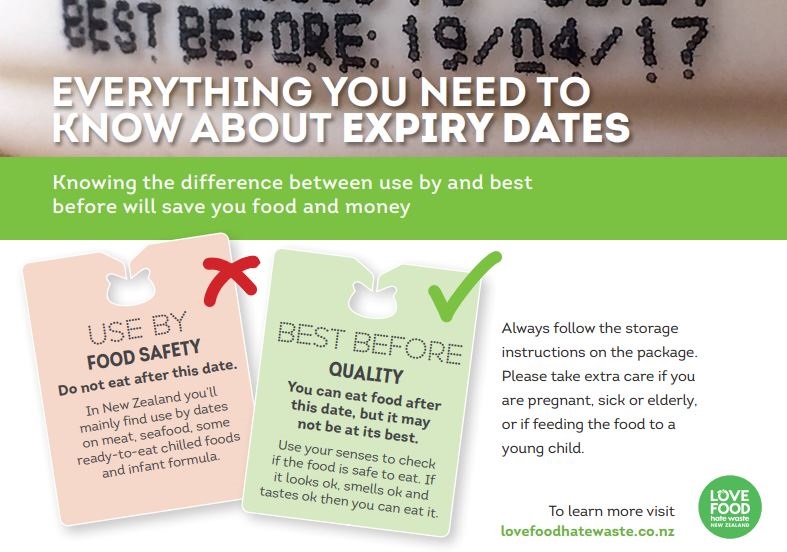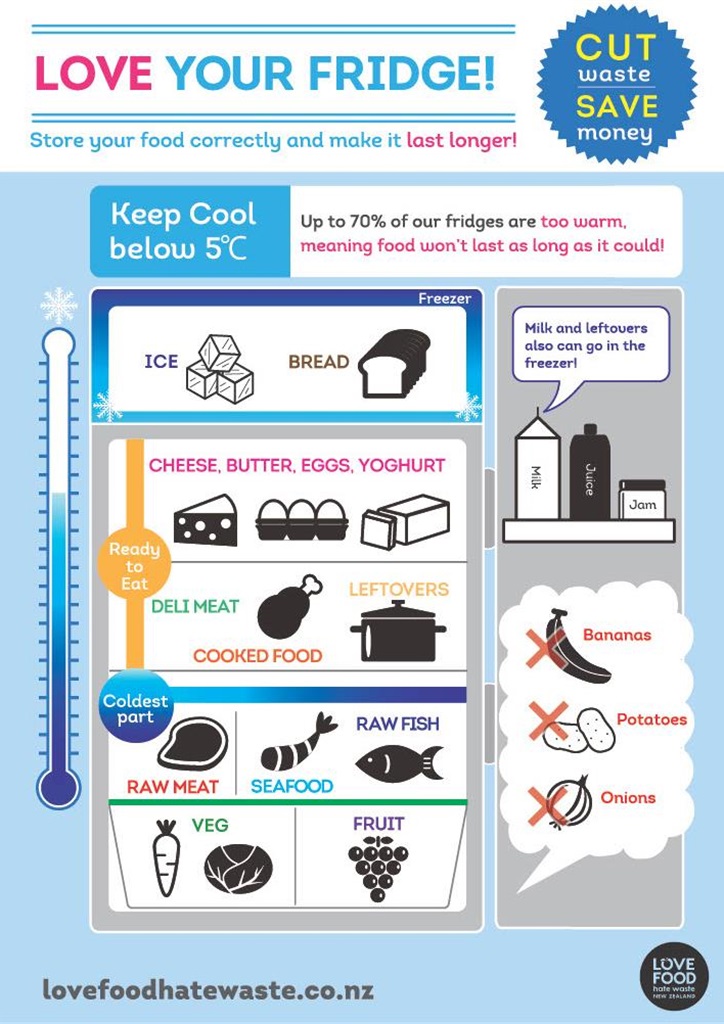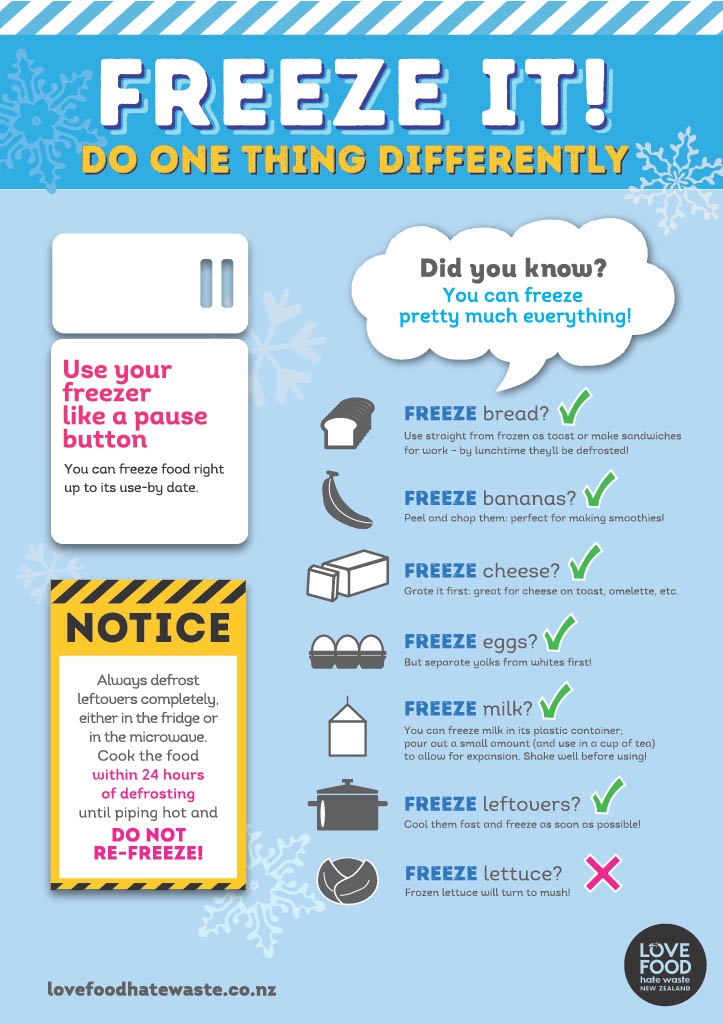Reduce

Learn some handy tips to reduce your household's food waste.
Did you know the average New Zealand family throws away $644 of edible food every year?
When food waste ends up in a landfill with the rest of our rubbish, it doesn't get composted as the conditions aren't right for this to happen. Waste in a landfill is tightly compacted stopping the oxygen needed for composting reaching the buried rubbish. This means it releases methane, a harmful greenhouse gas.
We are proud to support the national Love Food Hate Waste New Zealand campaign which aims to help household reduce their food waste through simple everyday tips and tricks.
Love Food Hate Waste website (lovefoodhatewaste.co.nz)
Food waste facts
As a country we throw away $1.17 billion of edible food every year. This works out to 86kgs of food each year per family - the equivalent of binning 63 size 14 chickens or 966 apples.
The top ten foods thrown away are:
- Bread
- Leftovers
- Oranges and mandarins
- Apples
- Bananas
- Potatoes
- Chicken
- Rice
- Lettuce
- Beef.
Six simple things you can do to reduce your food waste:
- plan your meals and buy what you need
- shop with a list
- store your bread in the freezer
- don't peel your vegetables
- stew fruit or make smoothies
- take your leftovers for lunch.
This diagram displays the above food waste facts.

Plan ahead to reduce waste and save time
- Plan your meals for the week ahead.
- Make shopping lists based on your meal plans and stick to them.
- Check your cupboards and fridge before writing your shopping list or take some quick photos on your phone to refer to at the supermarket.
- Batch cook and freeze portions for a quick mid-week meal.
Know your portion sizes to reduce waste
Using your hand can be an easy way to check the size of your food portions on your plate.
Different food types have different portion sizes:
- one fist - carbohydrates and legumes - think rice, beans, pasta and potato
- one hand from fingertips to wrist - fish and vegetables
- one palm - protein like beef, pork, eggs and chicken
- one cupped hand - fruit, nuts and seeds.
The diagram below shows how to use your hand to judge portion size for different food types.

Storing food correctly makes it last longer
If you wrap your veggies in a damp tea towel it will keep them fresher and crisper for much longer.
The Love Food Hate Waste website has more storage tips and tricks.
Storage tips
Expiry dates
Know what food labels mean. Best Before and Use By mean different things.
- Use By dates refer to food safety so you should not eat foods after this date. This date is usually found on meats, seafood and infant formula.
- Best Before dates refer to quality so food is usually safe to eat after this date but it might not be at its best.
- Use your common sense, if it looks, smells and tastes okay, then you can probably eat it.
- Always follow storage instructions and take extra care if you are pregnant, sick or elderly or feeding a young child.

Make the most of your fridge and freezer
Make the most of your fridge by:
- keeping the temperature between 1ºC and 4ºC. Up to 70% of our fridges are too warm meaning food doesn't last as long as it could.
- have an "Eat me first" shelf for foods with short shelf lives or leftovers that should be eaten soon
- store cheese, butter, eggs, yoghurt, deli-meat, cooked food and leftovers towards the top of your fridge
- store meat, seafood, vegetables and fruit at the bottom where the temperature is coolest.

- Use your freezer as a “pause button” to preserve your food until you need it. Did you know all these items can be frozen:
- bread
- bananas
- cheese
- eggs
- milk
- leftovers.

Leftovers make for great quick meals
Make sure you defrost leftovers fully before heating. Heat until piping hot within 24 hours and do not refreeze.
Use leftovers for lunches or quick meals during the week. Remember the 2:2:2 rule for leftovers – you have 2 hours to get it into the fridge, 2 days to eat it, and it will last for 2 months in the freezer.
Be creative with what you may consider waste e.g. potato peelings can be baked into crisps.
Leftover recipe ideas - Love Food Hate Waste website